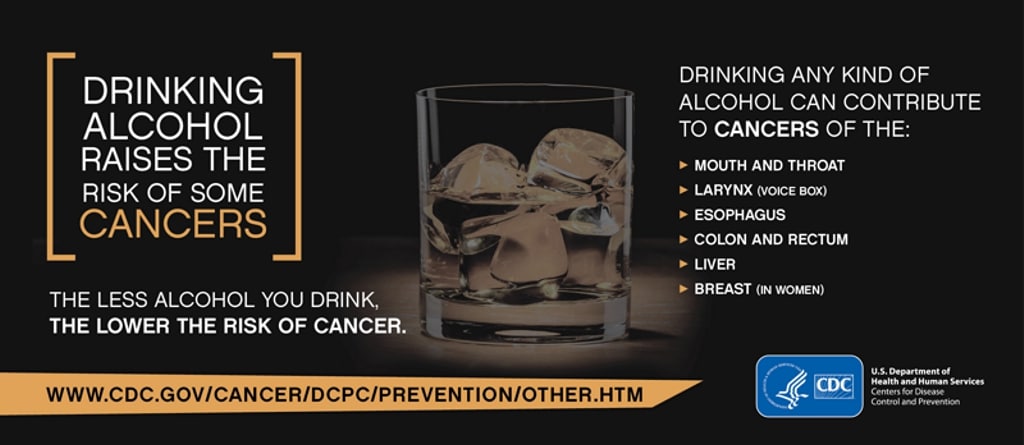Cancer Prevention & Control - Healthy Choices
You can reduce your risk of getting cancer by making healthy choices like keeping a healthy weight, avoiding tobacco, limiting the amount of alcohol you drink, and protecting your skin.
Avoiding Tobacco
Cigarette Smoking
Lung cancer is the leading cause of cancer death, and cigarette smoking causes almost all cases. Compared to nonsmokers, current smokers are about 25 times more likely to die from lung cancer. Smoking causes about 80% to 90% of lung cancer deaths. Smoking also causes cancer of the mouth and throat, esophagus, stomach, colon, rectum, liver, pancreas, voicebox (larynx), trachea, bronchus, kidney and renal pelvis, urinary bladder, and cervix, and causes acute myeloid leukemia.1 2
Visit smokefree.gov to learn how you can quit smoking.
Secondhand Smoke
Adults who are exposed to secondhand smoke at home or at work increase their risk of developing lung cancer by 20% to 30%. Concentrations of many cancer-causing and toxic chemicals are higher in secondhand smoke than in the smoke inhaled by smokers.3
Protecting Your Skin
Skin cancer is the most common kind of cancer in the United States. Exposure to ultraviolet (UV) rays from the sun and tanning beds appears to be the most important environmental factor involved with developing skin cancer. To help prevent skin cancer while still having fun outdoors, protect yourself by seeking shade, applying sunscreen, and wearing sun-protective clothing, a hat, and sunglasses. For more information, visit What Can I Do to Reduce My Risk of Skin Cancer?
Limiting Alcohol Intake
Cancer and Alcohol Infographic

Drinking alcohol raises the risk of some cancers. Drinking any kind of alcohol can contribute to cancers of the mouth and throat, larynx (voice box), esophagus, colon and rectum, liver, and breast (in women). The less alcohol you drink, the lower the risk of cancer.
Studies around the world have shown that drinking alcohol regularly increases the risk of getting mouth, voice box, and throat cancers.
A large number of studies provide strong evidence that drinking alcohol is a risk factor for primary liver cancer, and more than 100 studies have found an increased risk of breast cancer with increasing alcohol intake. The link between alcohol consumption and colorectal (colon) cancer has been reported in more than 50 studies.4
For information about alcohol and your health, visit Frequently Asked Questions about Alcohol and Public Health.
Keeping a Healthy Weight
Research has shown that being overweight or obese substantially raises a person’s risk of getting endometrial (uterine), breast, prostate, and colorectal cancers. Overweight is defined as a body mass index (BMI) of 25 to 29, and obesity is defined as a BMI of 30 or higher.4 Learn how to choose a healthy diet at Healthy Eating for a Healthy Weight, and read about exercise at Physical Activity for a Healthy Weight.
Getting Tested for Hepatitis C
Hepatitis is inflammation of the liver, which is most often caused by a virus. In the United States, the most common type of viral hepatitis is Hepatitis C. Over time, chronic Hepatitis C can lead to serious liver problems including liver damage, cirrhosis, liver failure, or liver cancer. CDC recommends that anyone who was born between 1945 and 1965 get tested for Hepatitis C.




















